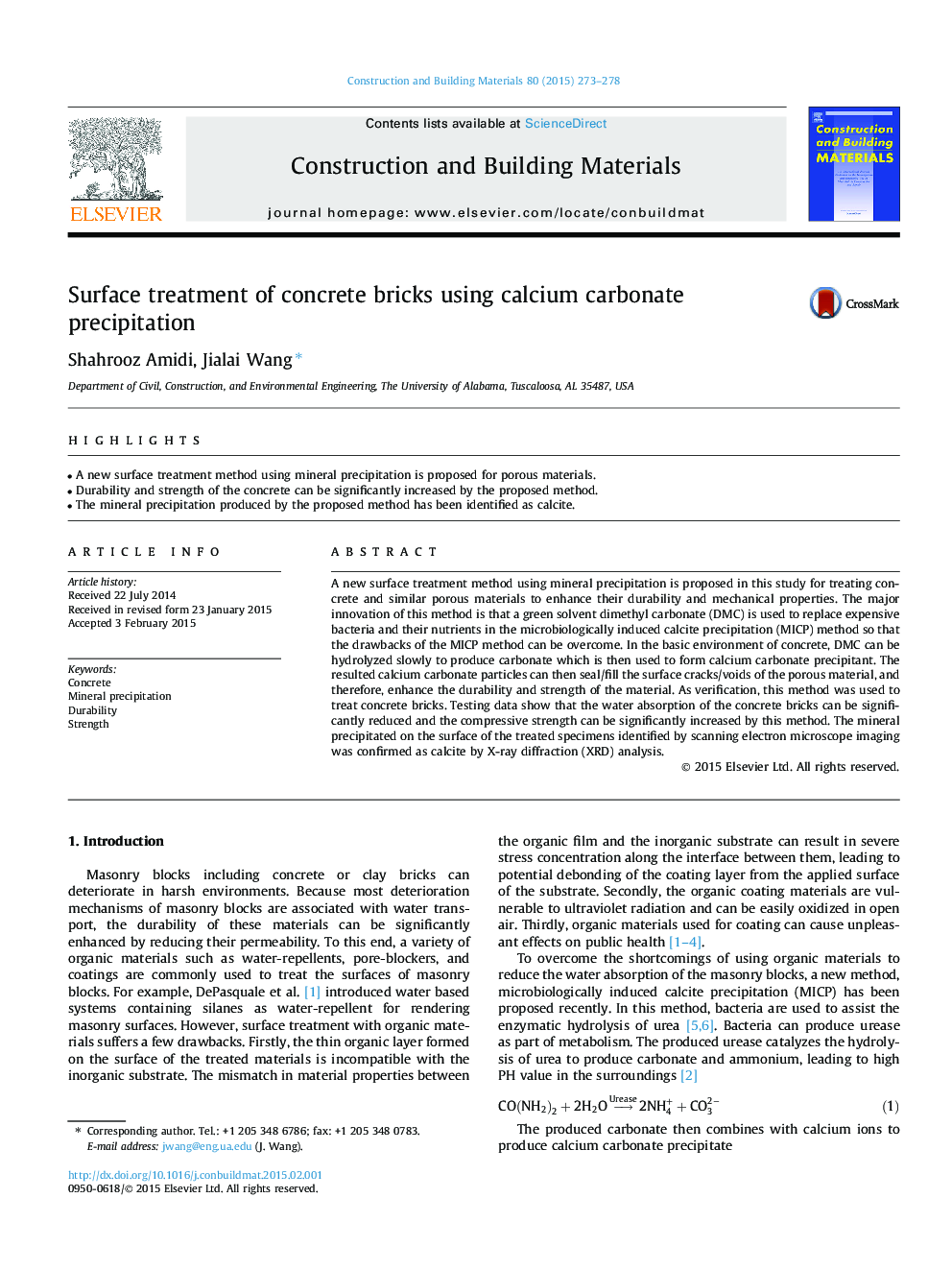| Article ID | Journal | Published Year | Pages | File Type |
|---|---|---|---|---|
| 6721334 | Construction and Building Materials | 2015 | 6 Pages |
Abstract
A new surface treatment method using mineral precipitation is proposed in this study for treating concrete and similar porous materials to enhance their durability and mechanical properties. The major innovation of this method is that a green solvent dimethyl carbonate (DMC) is used to replace expensive bacteria and their nutrients in the microbiologically induced calcite precipitation (MICP) method so that the drawbacks of the MICP method can be overcome. In the basic environment of concrete, DMC can be hydrolyzed slowly to produce carbonate which is then used to form calcium carbonate precipitant. The resulted calcium carbonate particles can then seal/fill the surface cracks/voids of the porous material, and therefore, enhance the durability and strength of the material. As verification, this method was used to treat concrete bricks. Testing data show that the water absorption of the concrete bricks can be significantly reduced and the compressive strength can be significantly increased by this method. The mineral precipitated on the surface of the treated specimens identified by scanning electron microscope imaging was confirmed as calcite by X-ray diffraction (XRD) analysis.
Related Topics
Physical Sciences and Engineering
Engineering
Civil and Structural Engineering
Authors
Shahrooz Amidi, Jialai Wang,
